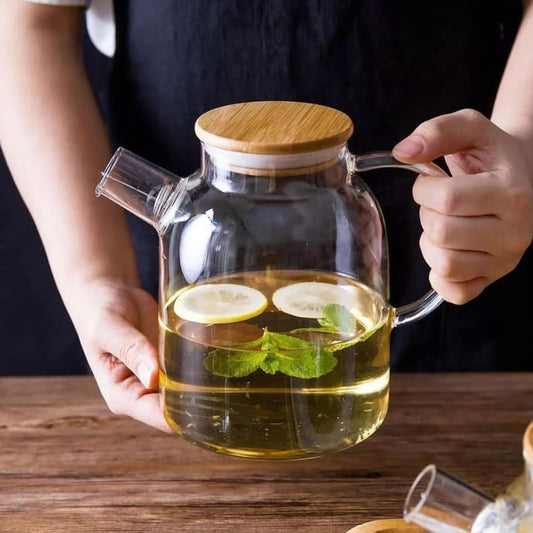Seaweed Superpower: How Ocean Greens Are Feeding the Future

Kelp, nori, and algae stepping out of sushi into everything.
The future of food might not be found in fields or factories — but beneath the waves. What was once considered a sushi sidekick is now making its debut as a global superfood: seaweed. These ocean greens — kelp, nori, wakame, and spirulina among them — are quietly rewriting the rules of farming, nutrition, and even climate action. From boutique restaurants to global biotech firms, everyone is paying attention to the power of the sea.
The Forgotten Crop of the Ocean
Seaweed isn’t a new discovery. Humans have been harvesting it for thousands of years — from the rocky coasts of Ireland and Wales to the shores of Japan and Korea. In ancient times, it was prized as both food and medicine. The Japanese call it “nori,” the Koreans “gim,” and the Icelanders once used it to survive long winters. For centuries, it was the quiet foundation of coastal diets — mineral-rich, flavorful, and sustainable before “sustainable” was even a concept.
But it took the 21st century for the rest of the world to wake up to its potential. Now, chefs, scientists, and climate entrepreneurs are converging around a shared realization: seaweed might be one of the keys to feeding a growing population without breaking the planet.
Nutritional Density in Every Strand
Seaweed is the ocean’s multivitamin. A single serving can provide more calcium than milk, more iron than spinach, and more vitamin C than an orange. It’s also one of the few plant sources of vitamin B12 — an essential nutrient often missing from vegetarian and vegan diets. And let’s not forget iodine: critical for thyroid function, and naturally abundant in ocean greens.
Spirulina, a blue-green microalgae, is especially revered for its protein — up to 70% by weight. NASA once studied it as a potential food source for long-term space missions. Meanwhile, kelp and dulse are rich in antioxidants, fiber, and polysaccharides that support gut health. It’s not just healthy; it’s functional food with a purpose.
Zero Land. Zero Fresh Water. Infinite Potential.
In a time when agriculture consumes 70% of the world’s freshwater and vast stretches of arable land, seaweed offers a radical alternative. It requires none of it. It grows in the open ocean, thriving solely on sunlight, saltwater, and carbon dioxide. In fact, seaweed actively absorbs CO₂ — meaning every kelp forest functions as a natural carbon sink.
Each acre of seaweed can absorb up to 20 times more CO₂ than the same area of terrestrial plants. And when farmed alongside shellfish, it creates thriving marine ecosystems. It’s farming that heals instead of harms — regenerative aquaculture at its best.
Beyond Sushi: Reinventing Culinary Creativity
For most people, seaweed evokes one image: the thin nori sheet wrapping a sushi roll. But that narrow view is rapidly changing. Today, seaweed is finding its way into nearly everything — from kelp jerky and seaweed pasta to algae-infused plant burgers and cocktails with a hint of saline brine.
Michelin-starred chefs now use kelp powder as a seasoning, dulse for its smoky, bacon-like flavor, and spirulina to color pastries and ice creams. Seaweed butter has become a new favorite among Nordic restaurants, while vegan companies are using algae oil as a clean, omega-rich substitute for fish oil. The umami depth that seaweed brings — that savory, oceanic richness — is being rediscovered as the foundation of a new culinary movement.
The Blue Economy: A Revolution Beneath the Waves
The economic wave is equally powerful. The global seaweed industry, valued at over $18 billion, is growing fast. Coastal farmers in Norway, the Philippines, and the U.S. are cultivating kelp not just for food, but for biofuels, packaging, and cosmetics. Seaweed extracts are used in skincare, pharmaceuticals, and even biodegradable plastics. Some innovators are turning seaweed into carbon-negative textiles and organic fertilizers that restore soil.
For developing coastal communities, this “blue revolution” means jobs, food security, and resilience. Seaweed farms can be established in shallow waters with minimal equipment — creating local economies that are both self-sufficient and sustainable.
Challenges and the Road Ahead
Of course, every green (or blue) revolution faces obstacles. Scaling seaweed farming requires policy support, marine zoning, and infrastructure for harvesting and processing. The supply chain — from ocean to table — still needs investment and innovation. And while awareness is growing, many consumers remain unfamiliar with how to cook or use seaweed beyond sushi.
Yet the direction is clear. Climate urgency, population growth, and food insecurity are forcing a rethink of how we produce nourishment. Seaweed, with its low footprint and high yield, stands as one of the most promising answers nature has already written.
The Future Tastes Like the Sea
In the coming decades, the color of the future of food might not be green or brown — it might be blue. Ocean farming could redefine agriculture itself, giving rise to what some call the “blue food revolution.” And at its center, waving gently beneath the tides, is seaweed — humble, ancient, and astonishingly modern.
So next time you see a glistening strip of nori or a bowl of kelp noodles, remember: this isn’t just food from the sea — it’s food for the future.
Share:





